
Leila Chaoui
An expert in natural beauty remedies, our author brings a wealth of knowledge and passion for Moroccan Argan Oil, guiding readers on its benefits and versatile uses for radiant skin and hair.
Key Takeaways
Did you know that Argania spinosa, also known as the argan tree, plays a crucial role in the ecosystem of Morocco? This remarkable tree not only provides numerous ecological and socioeconomic benefits but also faces significant challenges that require innovative agroforestry practices for its conservation and domestication. In this discussion, we will explore the fascinating world of Argania spinosa agroforestry practices, from interplanting and crop diversification to sustainable harvesting practices and economic opportunities. Prepare to uncover the secrets of this extraordinary tree and discover how its cultivation practices can contribute to a more sustainable future.
- Agroforestry practices such as interplanting, crop diversification, and alley cropping are effective in conserving soil and controlling erosion in Argania Spinosa agroforestry systems.
- Proper irrigation techniques, including surface irrigation, subsurface irrigation, and micro-irrigation systems, along with regular monitoring of soil moisture levels, are crucial for sustainable water management in Argania Spinosa agroforestry.
- Integrated pest management strategies that focus on understanding genetic variations within Argania Spinosa species, preserving natural enemies of pests, and optimizing irrigation practices are important for pest control in Argania Spinosa agroforestry systems.
- Sustainable harvesting practices such as pruning instead of uprooting trees, utilizing fallen fruit and branches, implementing rotational harvesting, and involving local communities in harvesting activities are essential for ensuring the long-term viability of argan tree populations and promoting economic benefits in Argania Spinosa agroforestry.
Interplanting and Crop Diversification
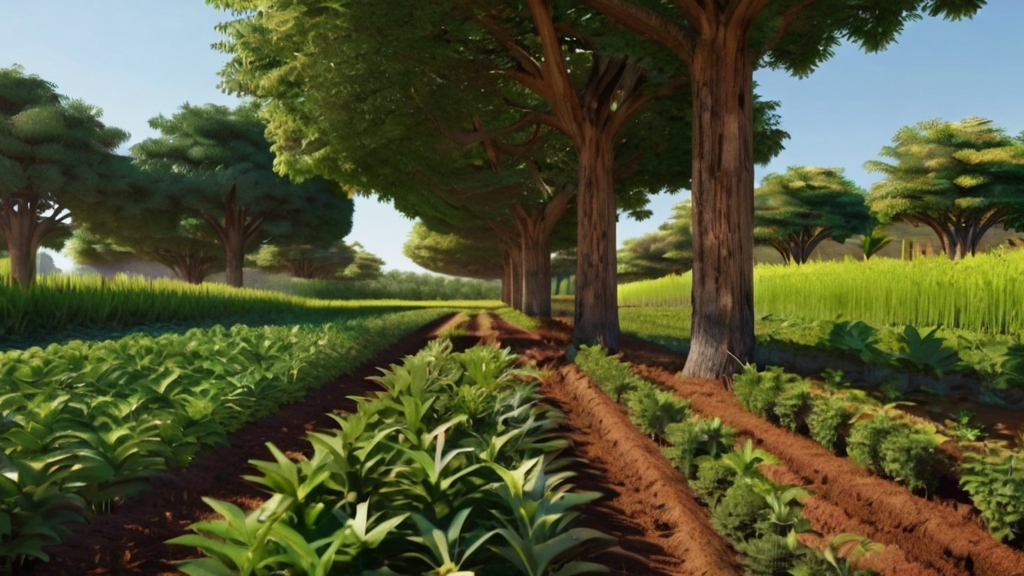
Interplanting and crop diversification play crucial roles in enhancing the sustainability and productivity of Argania spinosa agroforestry systems. The argan tree, found primarily in the argan forests of Morocco, is a valuable genetic resource due to its ability to adapt to harsh environments, particularly drought-prone regions. By incorporating interplanting and crop diversification strategies, the ecosystem’s resilience and sustainable development can be further promoted.
Interplanting involves the deliberate cultivation of different plant species within the argan agroforestry system. This practice not only optimizes land use but also enhances the overall productivity of the system. For instance, leguminous crops such as beans or clover can be interplanted with argan trees. Legumes have the unique ability to fix atmospheric nitrogen, thus enriching the soil and providing additional nutrients to support the growth of the argan tree. This interplanting approach not only increases the yield and quality of both the argan tree and the leguminous crop but also improves soil fertility in the long term.
Crop diversification is another important aspect of agroforestry practices in argan forests. By introducing different crops alongside argan trees, the system becomes more resilient to environmental changes and pest infestations. Additionally, crop diversification promotes genetic diversity, reducing the risk of crop failure and increasing the system’s overall stability. It also provides economic benefits by offering a variety of products for market, thus diversifying income sources for the local communities.
To ensure the success of interplanting and crop diversification, proper vegetative propagation techniques should be employed. Clonal propagation methods, such as grafting or tissue culture, can be used to propagate desirable and drought-adaptive varieties of argan trees. This technique ensures the maintenance of genetic diversity, allowing for the selection of superior genotypes that can withstand changing climatic conditions.
Soil Conservation and Erosion Control
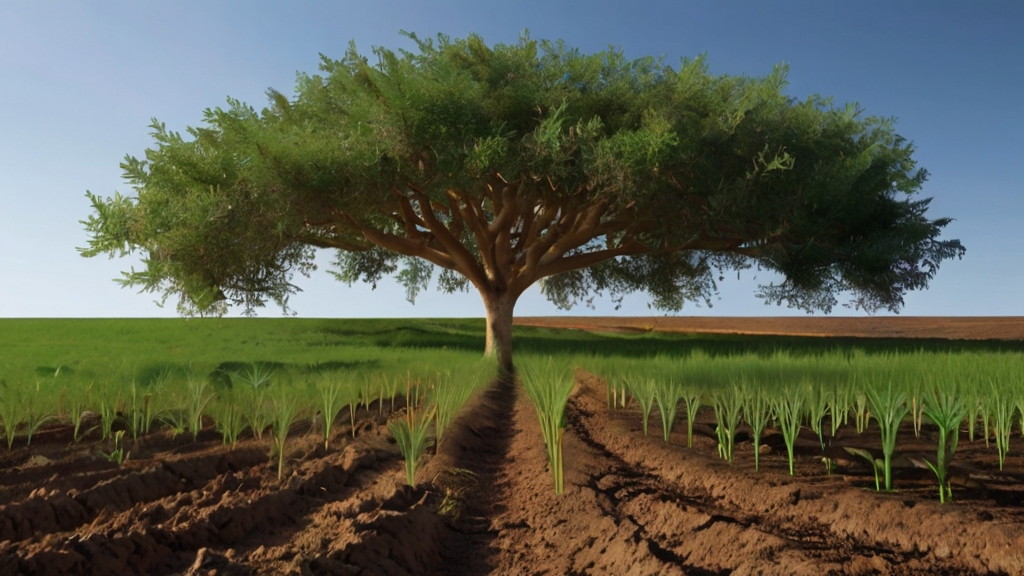
To effectively prevent soil erosion, it is crucial to implement agroforestry techniques and conservation practices in the cultivation of Argania Spinosa. By incorporating interplanting and crop diversification, you can create a diverse and resilient agroecosystem that helps to stabilize the soil and reduce erosion. Additionally, practices such as contour plowing, terracing, and mulching can further enhance soil conservation efforts, ensuring the long-term sustainability of Argania Spinosa agroforestry systems.
Soil Erosion Prevention
Agroforestry practices, such as intercropping with argan trees, can effectively prevent soil erosion by stabilizing the soil with their deep root systems. The root system of argan trees is well-developed and can penetrate deep into the soil, providing stability and preventing erosion. This is particularly important in argan agroforestry systems, where the soil is vulnerable to erosion due to factors such as hilly terrain and limited water availability. The genetic variations in argan trees also contribute to their ability to adapt to drought conditions, making them even more effective in preventing soil erosion. By implementing agroforestry practices that include argan trees, farmers can protect the soil from erosion and maintain the health of the natural argan forest. This, in turn, ensures the long-term sustainability of the ecosystem and benefits both the farmers and the environment.
Agroforestry Techniques
With a focus on soil conservation and erosion control, the discussion now turns to the agroforestry techniques employed to mitigate these challenges in argan agroforestry systems. Here are four key techniques utilized in argan tree orchards:
- Intercropping: Planting other crops alongside the argan trees helps reduce soil erosion and improves soil fertility. This practice maximizes land use and provides additional economic benefits.
- Windbreaks: Establishing windbreaks of argan trees acts as a barrier, controlling wind erosion and preventing soil loss. These windbreaks protect both the argan trees and surrounding crops.
- Alley cropping: Incorporating argan trees in alley cropping systems prevents soil degradation and erosion. By planting argan trees in rows, they serve as living fences, protecting the soil and improving its structure.
- Contour planting: By strategically planting argan trees along the contour lines of hilly terrains, water runoff and soil erosion are reduced. The deep root system of argan trees enhances soil stability, promoting conservation efforts.
Implementing these agroforestry techniques not only helps conserve the argan genetic variations but also contributes to sustainable production and domestication strategies, ensuring the long-term protection and adaptation of these valuable trees.
Conservation Practices
What are the most effective conservation practices for soil conservation and erosion control in agroforestry systems? Implementing soil conservation practices such as terracing, contour plowing, and windbreaks helps prevent soil erosion. Planting cover crops and establishing vegetation buffers are effective measures for reducing soil erosion and preserving soil structure. Proper management of water resources through techniques like irrigation scheduling and water retention systems can significantly contribute to soil conservation efforts. Conservation tillage methods, including no-till and reduced tillage, help maintain soil health and structure while minimizing erosion. Adopting agroforestry practices, such as alley cropping and silvopasture, can contribute to soil conservation by enhancing soil stability and reducing erosion. By incorporating these practices into argan tree plantations, the genetic basis and biogeographical distribution of this natural forest can be conserved, particularly in the context of climate change and drought conditions.
Water Management Techniques
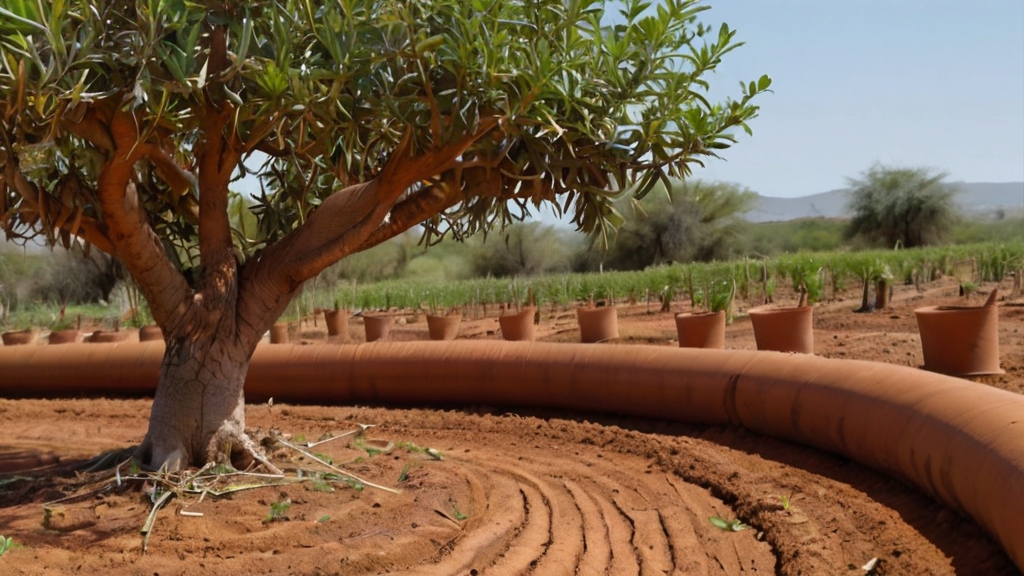
To effectively manage water in an Argania Spinosa agroforestry system, you need to implement efficient irrigation methods such as drip irrigation systems that deliver water directly to the roots, minimizing water loss through evaporation. Additionally, rainwater harvesting techniques like building cisterns or using contour trenching can capture and store rainwater for irrigation during dry periods. Monitoring soil moisture levels is also crucial to ensure water is used optimally and prevent over or under-watering.
Irrigation Methods
Drip irrigation, a method that conserves water and delivers precise amounts to the roots, is an effective technique for efficient water management in argan tree agroforestry practices. By using this method, you can ensure that water is distributed directly to the roots, reducing water loss due to evaporation. Here are four irrigation methods that can be used for argan tree cultivation:
- Sprinkler irrigation: This versatile method is suitable for larger areas, providing even water distribution over the argan tree plantation.
- Surface irrigation: This traditional yet effective method allows water to flow over the soil surface, promoting water absorption through increased soil contact.
- Subsurface irrigation: This method minimizes water loss due to evaporation by delivering water directly to the root zone, resulting in efficient water management.
- Micro-irrigation systems: Drip and trickle irrigation systems are particularly useful for argan tree cultivation, reducing water usage and costs while maintaining optimal soil moisture levels.
Rainwater Harvesting
When considering water management techniques in argan tree agroforestry practices, one effective approach is rainwater harvesting, which involves collecting and storing rainwater for future use. Rainwater harvesting is crucial in areas with limited water resources, as it reduces the dependence on traditional water sources. By utilizing catchment systems like rooftops, gutters, and storage containers, rainwater can be efficiently captured and used for various purposes, including irrigation, livestock, and domestic needs. Implementing rainwater harvesting supports sustainable water management and enhances resilience in arid and semi-arid regions. This technique is not only cost-effective but also environmentally friendly, contributing to water conservation efforts. Additionally, rainwater harvesting helps mitigate the impact of drought and water scarcity, ensuring the long-term viability of the argan ecosystem and supporting the growing needs of adult trees.
Soil Moisture Monitoring
Soil moisture monitoring is an essential water management technique used to evaluate the water requirements of argan trees. By implementing regular monitoring, you can assess the soil moisture levels and determine the appropriate irrigation techniques needed to maintain optimal water levels for healthy tree growth. Here are four key aspects to consider when it comes to soil moisture monitoring:
- Use appropriate irrigation techniques: Based on the soil moisture data collected from adult argan trees, employ irrigation methods that deliver water efficiently to the roots. This ensures that the trees receive the necessary amount of water for their growth and development.
- Implement mulching: Mulching helps conserve soil moisture by reducing water loss through evaporation. By covering the soil surface with a layer of organic material, you can maintain a more consistent soil moisture level and reduce the need for frequent watering.
- Consider drip irrigation systems: Drip irrigation systems are an effective way to deliver water directly to the roots of argan trees. These systems can be controlled based on real-time soil moisture data, allowing for precise water delivery and minimizing water wastage.
- Integrate sustainable water management practices: It is crucial to incorporate sustainable water management practices to ensure the long-term health and productivity of argan trees. By efficiently using water resources and minimizing water wastage, you can contribute to the sustainable growth and development of the argan tree ecosystem.
Integrated Pest Management
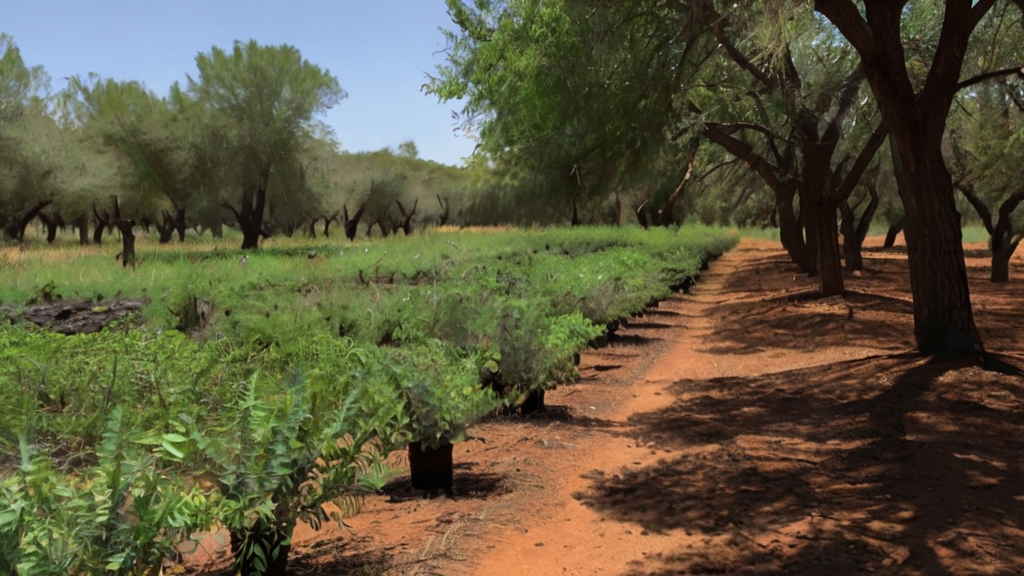
Integrated Pest Management is a comprehensive approach that combines various strategies to effectively manage and control pests in Argania Spinosa agroforestry practices. Pest management is crucial in ensuring the health and productivity of argan trees, as well as the overall success of agroforestry systems.
One of the key aspects of integrated pest management in argan agroforestry practices is understanding the genetic variations within the Argania Spinosa species. Research conducted by Msanda et al. (2014) has shown that different genetic resources of argan exhibit variations in their resistance to pests. By selecting and cultivating resistant varieties, farmers can reduce the impact of pests on their argan trees.
Another important strategy is monitoring the phenological description of argan trees. Phenology refers to the study of cyclical events in plants, such as bud burst, flowering, and fruiting. Understanding the phenological patterns of argan trees can help farmers anticipate pest outbreaks and take appropriate preventive measures.
Integrated pest management also involves implementing cultural practices that reduce pest populations. For example, maintaining a balanced ecosystem by preserving natural enemies of pests, such as beneficial insects and birds, can help control pest populations. Additionally, proper pruning and sanitation practices can minimize pest habitat and breeding sites.
In order to effectively manage pests, it is essential to consider environmental factors. Argan trees produce fruit, which attracts pests. By optimizing irrigation practices to meet the evaporation demand of the trees, farmers can reduce water losses and create a less favorable environment for pests.
Sustainable Harvesting Practices

To ensure the sustainability of argan agroforestry practices, the implementation of sustainable harvesting practices is imperative. These practices are crucial for the long-term viability of argan tree populations and the preservation of their unique ecological and economic benefits. Here are four important sustainable harvesting practices that have been identified in the argan tree literature:
- Prune branches instead of uprooting trees: By selectively pruning branches instead of uprooting entire trees, argan farmers can ensure regrowth and rejuvenate older argan trees. This practice not only allows for continuous production but also helps maintain the allelic richness of argan populations, which is essential for their genetic diversity and resilience.
- Utilize fallen fruit and branches: Fallen fruit and branches can be utilized for various purposes, such as producing argan oil, animal feed, or even as a source of fuel. By making use of these resources, farmers can reduce waste and maximize the economic potential of the argan tree.
- Implement rotational harvesting: Rotational harvesting involves harvesting argan fruits from different trees in a systematic manner, allowing ample time for the trees to recover. This practice helps maintain the ecological balance of the argan forest and ensures the long-term sustainability of argan tree populations.
- Engage local communities in sustainable harvesting practices: Involving local communities in sustainable harvesting practices is important for supporting economic opportunities and conservation efforts. By empowering local communities with the knowledge and skills needed for sustainable harvesting, we can ensure the continued health and productivity of argan forests.
Community-Based Forest Management

Community-Based Forest Management plays a crucial role in the sustainable management and conservation of forest resources, engaging local communities in decision-making processes and promoting the use of traditional knowledge and practices. This approach recognizes the importance of involving communities who depend on forests for their livelihoods, ensuring that their needs and concerns are considered in forest management plans and activities.
The implementation of Community-Based Forest Management requires close coordination between government agencies, non-governmental organizations (NGOs), and local communities. Through collaborative efforts, participatory and inclusive approaches to forest management can be developed, allowing for the effective engagement of community members. This not only empowers local communities to make decisions regarding forest management but also fosters a sense of ownership and responsibility among them.
In the context of the Argania Spinosa agroforestry practices, Community-Based Forest Management is particularly relevant. The argan tree, known for its multi-purpose uses, including the production of argan oil, is a significant resource for the local communities in the region. By involving these communities in the management of argan forests, the conservation and sustainable use of this valuable resource can be ensured.
Furthermore, Community-Based Forest Management promotes the use of traditional knowledge and practices. Local communities have a deep understanding of the argan tree and its ecosystem, accumulated over generations. Their knowledge includes techniques for argan tree cultivation, propagation, and sustainable harvesting, which are essential for maintaining healthy populations of argan trees. This traditional knowledge can be effectively integrated into forest management plans, ensuring the long-term viability of argan forests.
Economic Benefits and Market Opportunities
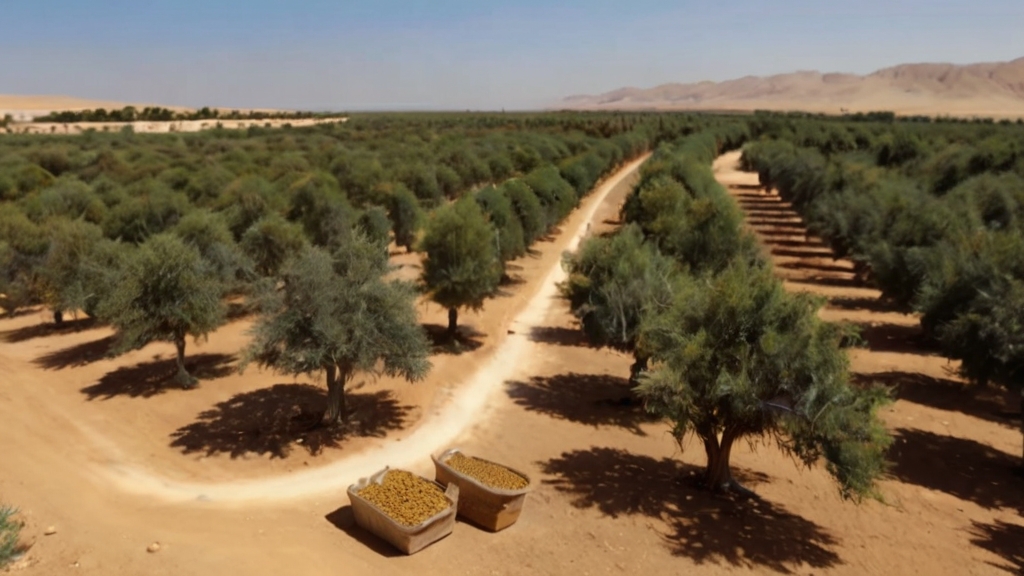
Economic benefits and market opportunities in Argan tree agroforestry are substantial, making it a lucrative venture for those involved. Here are four important areas to consider:
- Valuable Argan Oil Production: Argan tree cultivation offers significant economic opportunities through the production and sale of valuable argan oil and other products. Argan oil is in high demand in the food, cosmetics, and medicine sectors, presenting a promising avenue for agroforestry practices. The market demand for argan oil continues to grow, creating a growing need for increased cultivation and production.
- Socio-economic Benefits: Arganiculture provides socio-economic benefits to the local population, contributing to sustainable development and income generation. The expansion of argan cultivation and the establishment of modern orchards can open up new market opportunities, enhancing the economic potential of argan tree agroforestry. This not only benefits the farmers and their families but also the wider community.
- Research and Biotechnology: Research and biotechnology tools play a crucial role in improving protection, production, and market opportunities for argan products. Close coordination between researchers, farmers, and policymakers is essential in developing adequate strategies that optimize the economic benefits of argan tree agroforestry. This collaboration ensures that the industry keeps up with emerging market trends and adapts to changing consumer preferences.
- Diversity and Sustainability: Argan tree agroforestry contributes to the preservation of biodiversity in Morocco. The argan tree is a keystone species in the region and supports a unique ecosystem. By adopting sustainable practices, such as organic farming and responsible harvesting, the economic benefits from argan tree agroforestry can be maximized while preserving the ecological integrity of the area.
Frequently Asked Questions
How Has the Argan Tree Adapted to Survive in the Harsh Environment?
The argan tree has developed remarkable survival mechanisms in its harsh environment. Its root system efficiently absorbs nutrients and stores water, allowing it to withstand drought. The tree’s leaf structure minimizes water loss through transpiration, conserving precious moisture. It has adapted to thrive in arid conditions, tolerating high temperatures and low rainfall. The argan tree also adjusts its growth patterns to optimize sunlight exposure. It prefers well-drained soils and has effective reproduction strategies. However, climate change poses a threat to its survival, emphasizing the importance of preserving this resilient species.
What Is Argania Spinosa Use For?
Argania Spinosa, also known as the argan tree, has a multitude of uses. The oil extracted from its kernels, known as argan oil, is highly prized for its health benefits and culinary uses. Traditional extraction methods ensure the oil’s purity and quality. Argan trees also play a vital role in biodiversity, supporting a variety of plant and animal species. Additionally, argan oil is commonly used in skincare and beauty products, as well as being a natural remedy for various ailments. This cultural and economic significance has led to a global demand for argan oil, necessitating sustainable harvesting practices to protect the environment.
Can You Grow an Argan Tree?
Yes, you can grow an argan tree. Argan tree cultivation requires specific growing conditions such as well-drained soil, full sun exposure, and arid climates. Propagation methods include seed germination or grafting. Maintenance techniques include pruning, watering, and protecting the tree from pests and diseases. Benefits of growing argan trees include soil conservation, biodiversity preservation, and income generation. However, challenges in growing argan trees include desertification and climate change. Proper nursery management and harvest techniques are essential for maximizing yields and capitalizing on market opportunities for argan tree products.
Does Argan Only Grow in Morocco?
Yes, argan trees primarily grow in Morocco. They are endemic to the southwestern region of the country, where they are well-adapted to the arid and semi-arid climate. Argan cultivation is crucial for the production of argan oil, which has significant economic importance. The distribution of argan trees is limited to specific areas in Morocco, and their conservation is essential due to threats such as desertification and climate change. Furthermore, argan trees hold cultural significance in Morocco.
Related Articles
Fatty Acid Content in Culinary Argan Oil
Discover the fascinating and varied fatty acid profile of culinary argan oil, and how it can elevate your dishes with its unique flavor and health benefits.
Organic Argan Oil Vitamin E Richness
Want to transform your beauty routine? Discover the richness of Vitamin E in Organic Argan Oil and unveil a healthier, more radiant you.
Nutritional Value Fatty Acids Argan
Kickstart your journey to optimal wellness with argan oil's secret elixir, packed with essential fatty acids that hold the key to nourishing your body from the inside out.


